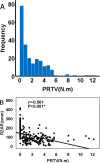Pin-tract infection is an important factor associated with pin loosening during external fixation: a prospective analysis of 47 consecutive patients
- PMID: 40212847
- PMCID: PMC11983403
- DOI: 10.3389/fcimb.2025.1459205
Pin-tract infection is an important factor associated with pin loosening during external fixation: a prospective analysis of 47 consecutive patients
Abstract
Background: The occurrence of pin loosening represents a common issue in the context of external fixation methodologies; nevertheless, a comprehensive investigation into the multifaceted causes of pin loosening, incorporating a multivariate analysis among pin infection, bone quality, and pin insertion angle, is notably absent in current literature. The present study endeavors to pinpoint factors associated with pin loosening through such a multivariate analysis.
Methodology: The study encompassed patients who underwent the removal of external fixators from March 2023 to July 2023. The assessment of pin loosening was executed through the utilization of the pin track score, the pin removal torque value (PRTV), and the radiolucent zone around the pin (RZAP) as depicted in digital radiography (DR) images. Culturing of the pin-bone interfaces was performed, and measurements of the grayscale intensity of cortical bone (GSCB) and pin verticality within DR images were taken. Multivariate analyses were conducted employing a Generalized Linear Mixed-Effects Model (GLMM), Adjusted odds ratios (aORs) with 95% confidence intervals (CIs) were calculated by exponentiating the model coefficients (Exp(β)).
Results: Altogether 47 patients with a total of 220 pins were included for analysis. The mean PRTV was 1.9 ± 2.1 N·m. The correlation analysis between PRTV and RZAP yielded a P-value of less than 0.001, signifying a substantial correlation between pin loosening and RZAP. For pins with a PRTV of 0, the RZAP measured 1.9 ± 0.8 mm. The positive rate of bacterial culture was 20%, and the loosening rate was 26.8%. Pin loosening was significantly associated with bacterial infection (aOR = 2.24, 95% CI: 1.03-4.90, P = 0.04) and GSCB (aOR = 0.50, 95% CI: 0.38-0.66, P < 0.01), but not with pin verticality (aOR = 1.00, 95% CI: 0.93-1.08, P = 0.99). Non-HA-coated pins remained significantly associated with bacterial infection (aOR = 8.20, 95% CI: 2.18-30.85, P = 0.002), whereas HA-coated pins were not (aOR = 3.44, 95% CI: 0.24-48.76, P = 0.36).
Conclusions: Pin loosening was significantly associated with bacterial infection at the pin-bone interface and lower GSCB, but not with pin verticality. Notably, infection strongly predicted loosening in non-HA-coated pins, while HA-coated pins demonstrated higher raw infection rates.
Keywords: bacterial culture; bone quality; insertion angle; pin infection; pin loosening.
Copyright © 2025 Huang, Huang, Zhang, Song, Yao, Yang, Tian, Lin, Han, Xi, Wang, Jiang and Hu.
Conflict of interest statement
The remaining authors declare that the research was conducted in the absence of any commercial or financial relationships that could be construed as a potential conflict of interest.
Figures






Similar articles
-
State of the art review: techniques to avoid pin loosening and infection in external fixation.J Orthop Trauma. 2002 Mar;16(3):189-95. doi: 10.1097/00005131-200203000-00009. J Orthop Trauma. 2002. PMID: 11880783 Review.
-
Hydroxyapatite-coated compared with stainless steel external fixation pins did not show impact in the rate of pin track infection: a multicenter prospective study.Int Orthop. 2023 May;47(5):1163-1169. doi: 10.1007/s00264-023-05717-w. Epub 2023 Feb 11. Int Orthop. 2023. PMID: 36773051 Free PMC article. Clinical Trial.
-
Hydroxyapatite-coated Schanz pins in external fixators used for distraction osteogenesis : a randomized, controlled trial.J Bone Joint Surg Am. 2002 Jul;84(7):1162-6. doi: 10.2106/00004623-200207000-00011. J Bone Joint Surg Am. 2002. PMID: 12107316 Clinical Trial.
-
Hydroxyapatite-coated external-fixation pins. The effect on pin loosening and pin-track infection in leg lengthening for short stature.J Bone Joint Surg Br. 2004 Aug;86(6):892-7. doi: 10.1302/0301-620x.86b6.13875. J Bone Joint Surg Br. 2004. PMID: 15330032 Clinical Trial.
-
Hydroxyapatite-coated external fixation pins.Expert Rev Med Devices. 2005 Jul;2(4):465-71. doi: 10.1586/17434440.2.4.465. Expert Rev Med Devices. 2005. PMID: 16293085 Review.
References
MeSH terms
LinkOut - more resources
Full Text Sources

